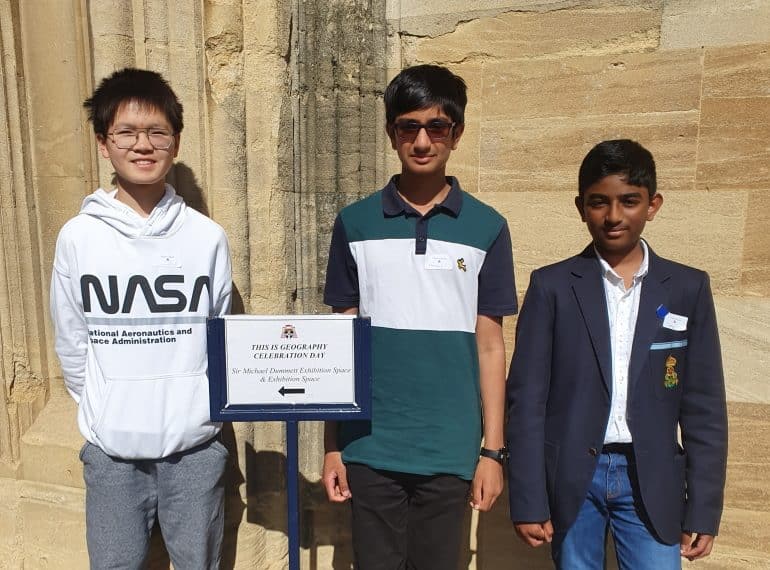
Three QE boys were finalists in a national Geography competition run by Christ Church, Oxford.
Shreyas Mone, of Year 10,  Zhuoer Chen, of Year 9, and Sarang Nair, of Year 7, were among just ten finalists nationwide.
Zhuoer Chen, of Year 9, and Sarang Nair, of Year 7, were among just ten finalists nationwide.
All three were invited with their parents to a special prize-giving day at Christ Church, one of the largest and most famous of all the Oxford University colleges. The day included a pitch to encourage the visiting high-flyers to consider studying Geography there.
Headmaster Neil Enright said: “My congratulations go to Shreyas and to Zhuoer and Sarang on their success.”
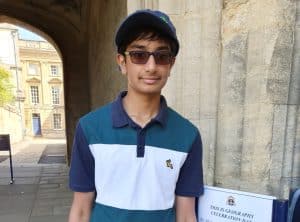 The competition, which is part of Christ Church’s outreach work, was open to all UK state school pupils in Years 7–10. Entrants had to submit a video 2–5 minutes long on a geographical issue or phenomenon that was local to them.
The competition, which is part of Christ Church’s outreach work, was open to all UK state school pupils in Years 7–10. Entrants had to submit a video 2–5 minutes long on a geographical issue or phenomenon that was local to them.
The day featured screenings of the videos, a prize-giving ceremony, a tour of the college, and talks from current students and staff. There was also a workshop about geopolitics in popular culture, which covered, inter alia, the issues of missile tests in Iron Man and mineral resources in Black Panther, as well as how Bond villains were supposedly based upon enemies of the USA.
Shreyas’s video – entitled Why is the UK’s weather so dismal? – explored why the UK has mild temperatures and high rainfall, compared to the cold, dry conditions of Canada, when, for example, Calgary is on a latitude slightly to the south of London.
 The video compared average yearly temperatures at Greenwich weather station with those at Calgary and found they were 11.35C higher.
The video compared average yearly temperatures at Greenwich weather station with those at Calgary and found they were 11.35C higher.
This, Shreyas explained, is partly because of the Gulf Stream bringing warm water to Britain and conversely the Labrador current taking cold water to southern Canada. In the video, he addresses why this affects the weather in inland areas, rather than just the coast.
His video was illustrated by a range of maps and photos and even a clip of a fox jumping into snow, with colourful captions setting out his argument.
Shreyas was inspired to enter the competition after seeing it advertised by Head of Geography Emily Parry on eQE, the School’s remote learning platform.
Sarang’s video on the Effects of floods in Hertfordshire included photos of recent floods; it looked at where flood plains are and explored whether houses should be built on flood plains.

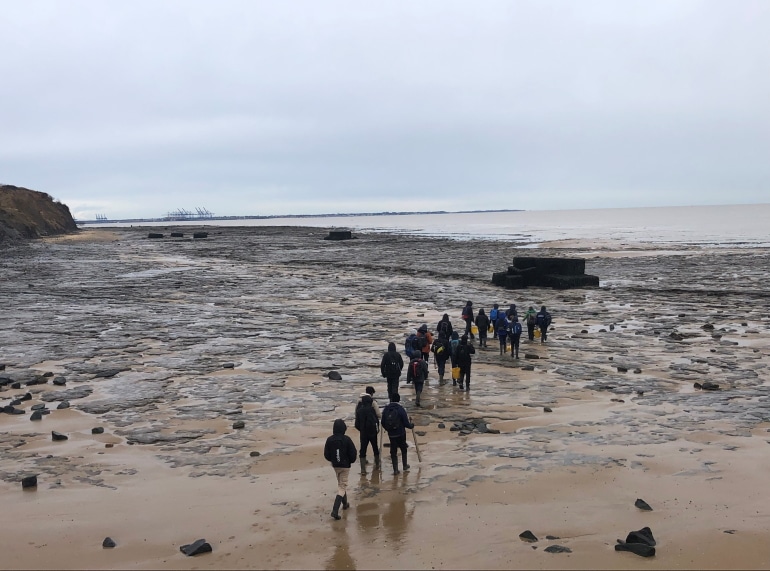
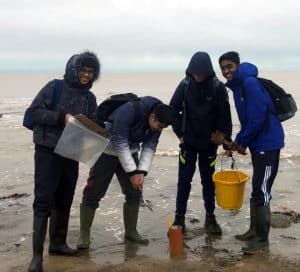 The 20 Year 12 geographers were able to inspect two World War II pillboxes that had fallen off the cliff at Walton-on-the-Naze and are now exposed by the sea at low tide.
The 20 Year 12 geographers were able to inspect two World War II pillboxes that had fallen off the cliff at Walton-on-the-Naze and are now exposed by the sea at low tide.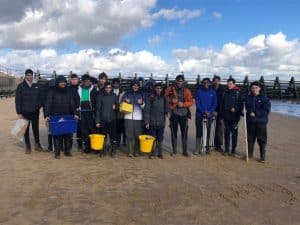 The party stayed in the Grade I-listed Flatford Mill. Today owned by the National Trust and leased to the Field Studies Council, the mill was owned by successive generations of the Constable family and was the subject of one of John Constable’s most famous paintings, completed in 1816.
The party stayed in the Grade I-listed Flatford Mill. Today owned by the National Trust and leased to the Field Studies Council, the mill was owned by successive generations of the Constable family and was the subject of one of John Constable’s most famous paintings, completed in 1816.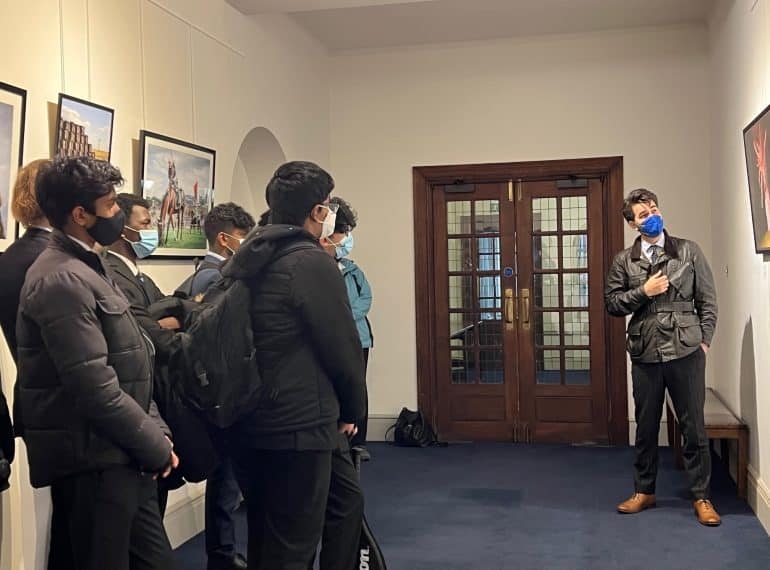
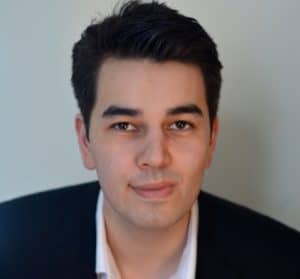 Featuring photography and a number of essays, the exhibition, which marks the tenth anniversary of the nuclear disaster and the earthquake and tsunami that precipitated it, is being held at the Royal Geographical Society in London. The earthquake and tsunami killed more than 15,000 and triggered a triple meltdown at the power station, forcing 200,000 people from their homes.
Featuring photography and a number of essays, the exhibition, which marks the tenth anniversary of the nuclear disaster and the earthquake and tsunami that precipitated it, is being held at the Royal Geographical Society in London. The earthquake and tsunami killed more than 15,000 and triggered a triple meltdown at the power station, forcing 200,000 people from their homes.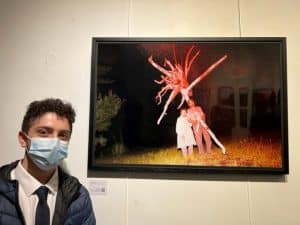 The exhibition, entitled Picturing the Invisible, sees his research interests coming together with his longstanding engagement with the London art scene: while in the Sixth Form at QE, he took part in in the Royal Academy’s attRAct programme and in the Louis Vuitton Young Arts Program; he has also been an Event Manager at the OPEN Ealing community art gallery.
The exhibition, entitled Picturing the Invisible, sees his research interests coming together with his longstanding engagement with the London art scene: while in the Sixth Form at QE, he took part in in the Royal Academy’s attRAct programme and in the Louis Vuitton Young Arts Program; he has also been an Event Manager at the OPEN Ealing community art gallery.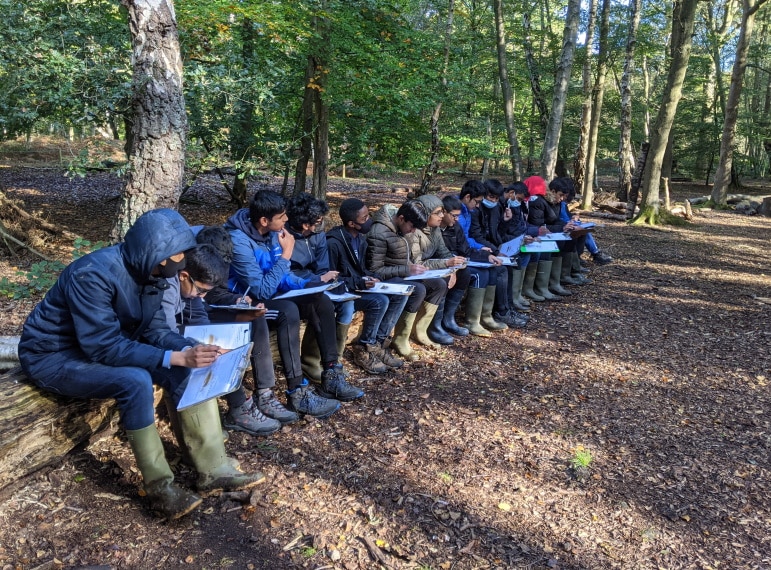
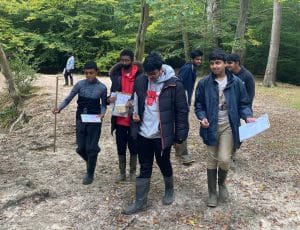 On their Human Geography trip, A-level students investigated gentrification in Wandsworth, where they met residents only too willing to share their views on how their area had changed.
On their Human Geography trip, A-level students investigated gentrification in Wandsworth, where they met residents only too willing to share their views on how their area had changed.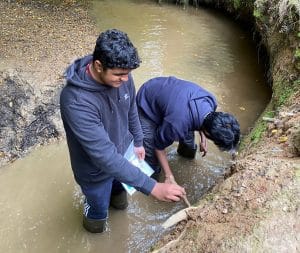 The field trip helped to consolidate boys’ understanding of rivers, which they had previously studied in a unit titled Physical Landscapes of the UK.
The field trip helped to consolidate boys’ understanding of rivers, which they had previously studied in a unit titled Physical Landscapes of the UK.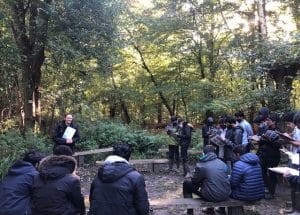 More recently, this month’s visit by Year 12 and 13 pupils to south London had as its goal exploration of the question: To what extent has Northcote ward undergone the process of gentrification? The visit was for part of a unit of study for the Edexcel A-level course entitled Regenerating Places, under which the sixth-formers are looking at the London boroughs of Wandsworth and Newham.
More recently, this month’s visit by Year 12 and 13 pupils to south London had as its goal exploration of the question: To what extent has Northcote ward undergone the process of gentrification? The visit was for part of a unit of study for the Edexcel A-level course entitled Regenerating Places, under which the sixth-formers are looking at the London boroughs of Wandsworth and Newham.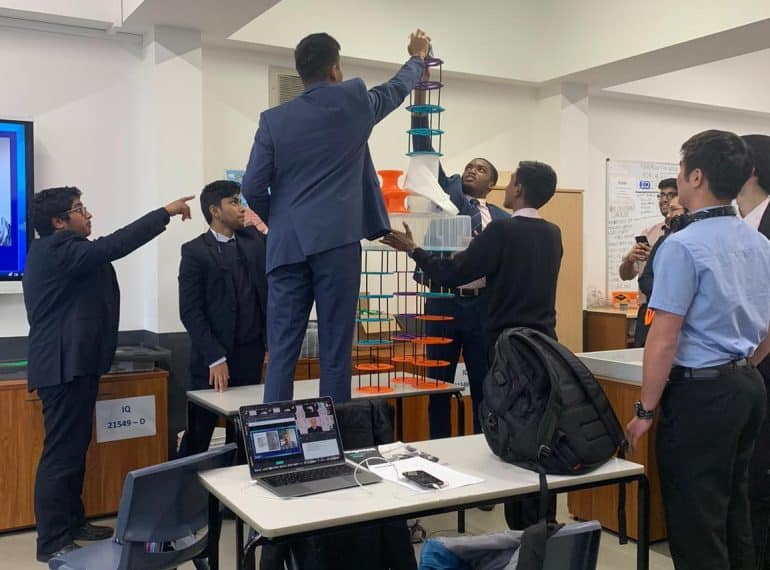
 Sixth-formers have already enjoyed stimulating day-long sessions on Medicine in Action, Chemistry in Action, Product Design in Action and Geography in Action, with a similar event for Biology due to take place in December.
Sixth-formers have already enjoyed stimulating day-long sessions on Medicine in Action, Chemistry in Action, Product Design in Action and Geography in Action, with a similar event for Biology due to take place in December.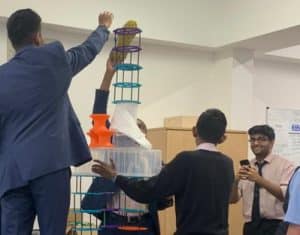 The Resourcefulness and design lecture, delivered by Kingston University Senior Lecturer Pascal Anson, stimulated a practical activity, pictured. “Here we see some examples of structures which were resourcefully developed by the students using VEX IQ and EDR Robotics game elements – great thinking on their feet!” added Mr Noonan.
The Resourcefulness and design lecture, delivered by Kingston University Senior Lecturer Pascal Anson, stimulated a practical activity, pictured. “Here we see some examples of structures which were resourcefully developed by the students using VEX IQ and EDR Robotics game elements – great thinking on their feet!” added Mr Noonan.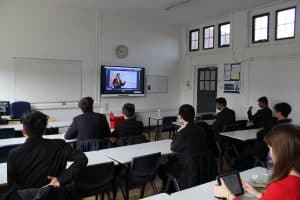 The Geography lectures were similarly wide-ranging. One talk, entitled Lessons in sustainability: An explorer’s tale, was by Jason Lewis, the first person to circumnavigate the earth without using motors or sails. Another featured academic Martin Evans, from the University of Manchester, speaking on Landscape Systems in the Anthropocene. And Emily Parry, Head of Geography, highlighted lectures on water insecurity and on how COVID-19 has impacted the Pacific Islands.
The Geography lectures were similarly wide-ranging. One talk, entitled Lessons in sustainability: An explorer’s tale, was by Jason Lewis, the first person to circumnavigate the earth without using motors or sails. Another featured academic Martin Evans, from the University of Manchester, speaking on Landscape Systems in the Anthropocene. And Emily Parry, Head of Geography, highlighted lectures on water insecurity and on how COVID-19 has impacted the Pacific Islands.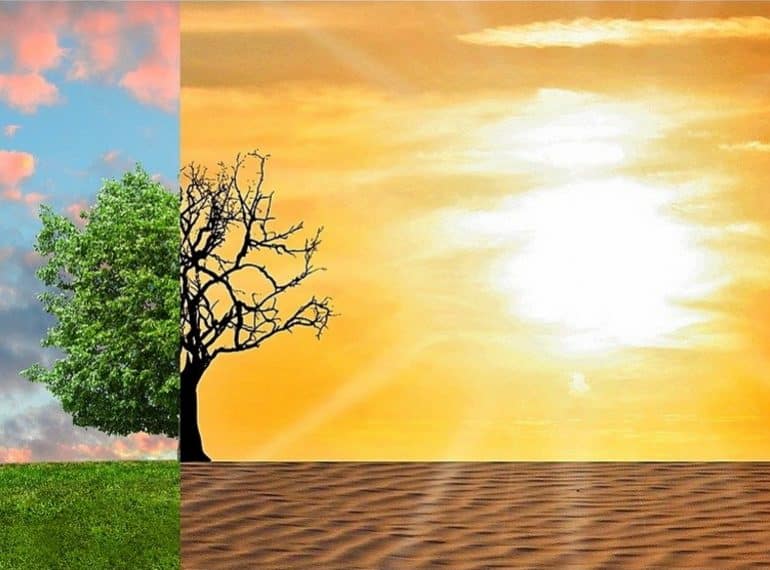
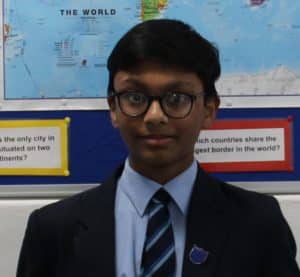 Emily Parry, Head of Geography, said: ‘I was very impressed with the standard of submissions and the boys’ awareness of the potential impacts of climate change. The creative poems and stories clearly highlight the threat that climate change poses for all of us.”
Emily Parry, Head of Geography, said: ‘I was very impressed with the standard of submissions and the boys’ awareness of the potential impacts of climate change. The creative poems and stories clearly highlight the threat that climate change poses for all of us.”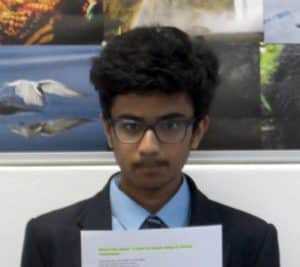 Most of Shreyas’s poem is equally bleak – “none of us will survive” – and he adds anger into the mix:
Most of Shreyas’s poem is equally bleak – “none of us will survive” – and he adds anger into the mix: